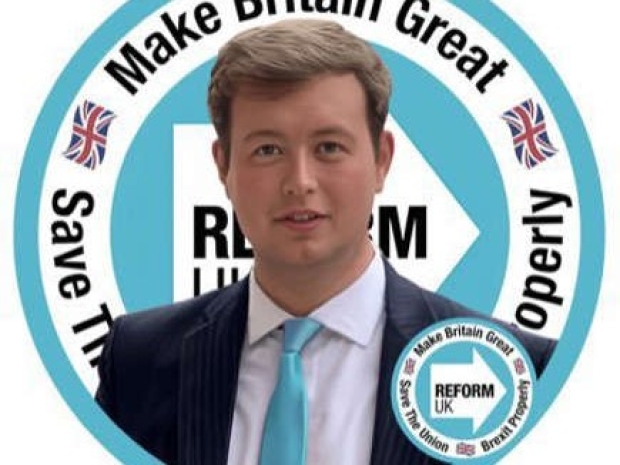Some candidates' names appeared only on ballot papers, and their photos were absent from election leaflets posted through voters’ doors and from the party’s website.
One has been accused of being AI-generated or immaculately photoshopped on campaign literature.
A Reform spokesperson denied the claims: “All our candidates are categorically real. Given the rush, a few are just paper candidates and didn’t campaign. Some people began as paper candidates but then did campaign, and one of these – James McMurdock in South Basildon and East Thurrock – ended up winning his seat.”
Alarms were sounded when Mark Matlock (pictured), one of Reform’s 609 candidates on July 4, failed to show up at the count, having posted no photos of himself on the campaign trail in the previous weeks. He hadn’t appeared at the hustings, and the Green Party candidate Shao-Lan Yuen told Byline Times: “I haven’t seen or heard from the Reform UK candidate.”
Shao-Lan Yuen added: “I’ve heard suspicions that the image on his leaflets are AI generated.”
When people looked closely at his campaign literature, some believed he wasn’t real. Was Reform’s candidate just AI? His photo was made by AI quality – soft edges of his face, a blurred hairline, lack of depth from shadows and lighting, and almost flawless skin.
Ironically, he appears to have been a ghost candidate who actually looks that way. Matlock said he missed the count because he had pneumonia. The hospital he visited was closed before its closing time.
He posted a ‘temporary closure’ sign outside the hospital’s minor injuries unit, but not of himself. Matlock added that his picture looked AI-generated because he didn’t have a picture of himself with the Reform colours, so he had to photoshop the image a bit.
Richard Tice, a newly elected Reform MP and party leader before Nigel Farage swept him aside, has shared the post to hit back at claims that Matlock doesn’t exist. Tice said: “All those muppets, including The Guardian, claiming Mark is not a real person: He was very ill, trying to get into a hospital… ‘But lefties don’t care, just slander folk claiming real people do not exist. Shameful.”
After a few days, Matlock shared a video to X that appeared to show himself dancing to Ini Kamoze’s Here Comes The Hotstepper. Byline Times has also reported that it has ‘confirmed Matlock is a real person’, saying: He appears to be an antiques dealer from Guernsey.
However, the news outlet also highlighted cases of Reform candidates with seemingly zero digital footprint—no photos, bios, social media accounts, or sightings on the campaign trail. As many as 115 people running for Reform were ‘ghost candidates.’
A Reform spokesperson said: ‘These candidates are not ghosts. This is just an issue of institutional capacity, the sheer quantity of work involved in making everything work.’
Some won thousands of votes in their constituencies despite it being ‘almost impossible to find anything about them’, as Tortoise, an online news outlet, reported.
One case of a paper candidate in Glasgow prompted a TikToker to do a multi-part series searching for the Reform election hopeful, even going so far as to visit an address in London with no luck.
Analysis by Byline Times revealed that only 45 per cent of Reform candidates had a published Facebook page. Nearly 100 per cent had an email address, many of which were generic local party addresses. Just 9 per cent had Instagram, 3 per cent had LinkedIn, 8 per cent had TikTok, and 44 per cent had X.
It’s hard to prove a person doesn’t exist, and there is no evidence that any of Reform’s candidates are not real people.
However, if any of them were fake, it would be a severe electoral offence for the Electoral Commission and the police to investigate. To become an election candidate, you must submit a completed nomination paper, a home address form, your consent to nomination, and authorisation to use a party description and emblem if standing for a party.
That’s according to the Electoral Commission website, which does not mention proof of ID in the nomination process. General Election nomination papers do not ask for a photo ID.

